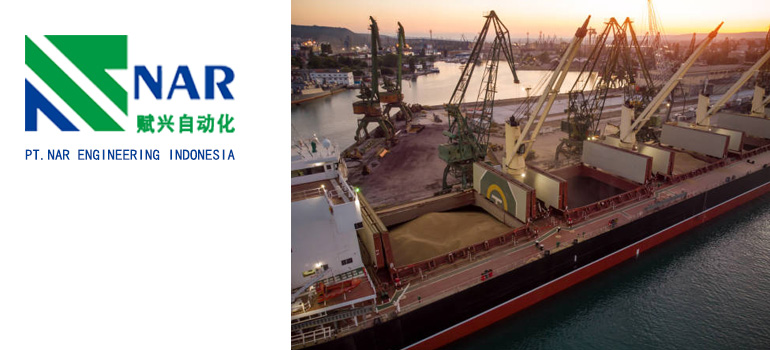In today’s globalized trade environment, the loading process of goods is crucial for ensuring safety, improving efficiency, and reducing costs. The loading of goods on a cargo ship is not only about simply stacking the goods on board, but also a comprehensive process involving planning, technology, and strategy. This article will delve into how to achieve efficient and accurate loading of cargo ships to ensure safe transportation and timely delivery of goods.

Key steps for loading goods:
Classification and zoning of goods: Before loading, the primary task is to classify and partition the goods. According to the nature, size, and destination of the goods, they are grouped and placed to prevent cross contamination or interference between different goods.
Stable stacking: The stable stacking of goods is an important link to ensure the safety of maritime transportation. Different types and sizes of goods need to be securely stacked in the cabin to prevent movement, shaking, or damage during navigation.
Cabin planning: Reasonable cabin planning is crucial for the stable loading of goods. The supporting structure, fixed equipment, and cargo layout inside the cabin need to be carefully designed to ensure that the cargo remains stable during the ship’s operation.
Safety measures: During the loading process of goods, safety measures must not be ignored. Use appropriate lifting equipment, binding materials, and anti-skid pads to ensure that the goods are not damaged during loading and to reduce the possibility of unexpected risks.
Strategy for loading goods:
Maximizing space utilization: Maximizing the utilization of cabin space is the core of efficient cargo loading. Through scientific cargo layout and innovative loading methods, more cargo can be accommodated in limited space, thereby improving transportation efficiency.
Center of gravity balance: The distribution of the center of gravity of the cargo needs to be reasonably balanced to ensure the stability of the ship. Excessive concentration of weight may cause the ship to tilt or become unstable, so it is necessary to allocate the position of the cargo reasonably.
Quick loading and unloading plan: Develop a fast and efficient loading and unloading plan that can minimize the time that cargo ships stay at ports. This helps to reduce loading and unloading costs and maintain the transportation efficiency of the ship.
Intelligent technology application: Introducing the Internet of Things (IoT) and sensor technology, which can monitor the status of goods and cabin conditions in real-time. This intelligent technology application helps predict potential problems, take timely measures, and ensure the safe loading and transportation of goods.
Guarantee of safety and stability:
Use professional equipment: equip with appropriate lifting equipment, fixing materials, and binding tools to ensure that the goods are securely fixed during loading and avoid movement or damage during sea transportation.
Support structure inside the cabin: The support structure inside the cabin needs to be carefully designed to ensure the stability of the cargo during navigation. Use support frames, gaskets, and other equipment to prevent goods from sliding or collapsing.
Anti slip measures: Use anti slip pads and materials in the cargo placement area to reduce the risk of cargo sliding inside the cabin and improve overall safety.
Application of technological innovation:
Intelligent monitoring system: Introduce Internet of Things and sensor technology to monitor the status of goods, cabin conditions, and center of gravity balance in real-time. This helps predict potential problems and take timely measures.
Data analysis and optimization: Utilize data analysis to continuously optimize loading strategies. Improve loading efficiency and overall operational level of cargo ships through historical data and simulation experiments.
Cargo loading is an indispensable part of modern international trade, playing an important role in ensuring the safety of goods, improving transportation efficiency, and reducing costs. By rational planning, precise layout, and the application of intelligent technology, efficient and accurate cargo loading can be achieved. In the context of fierce global trade competition, optimizing the loading process not only has strategic significance for shipping companies, but also provides support for the smooth operation of the entire international trade system.
Maybe you are interested in the following: Optimization strategy for bulk ship loading: efficient, safe, and worry free

